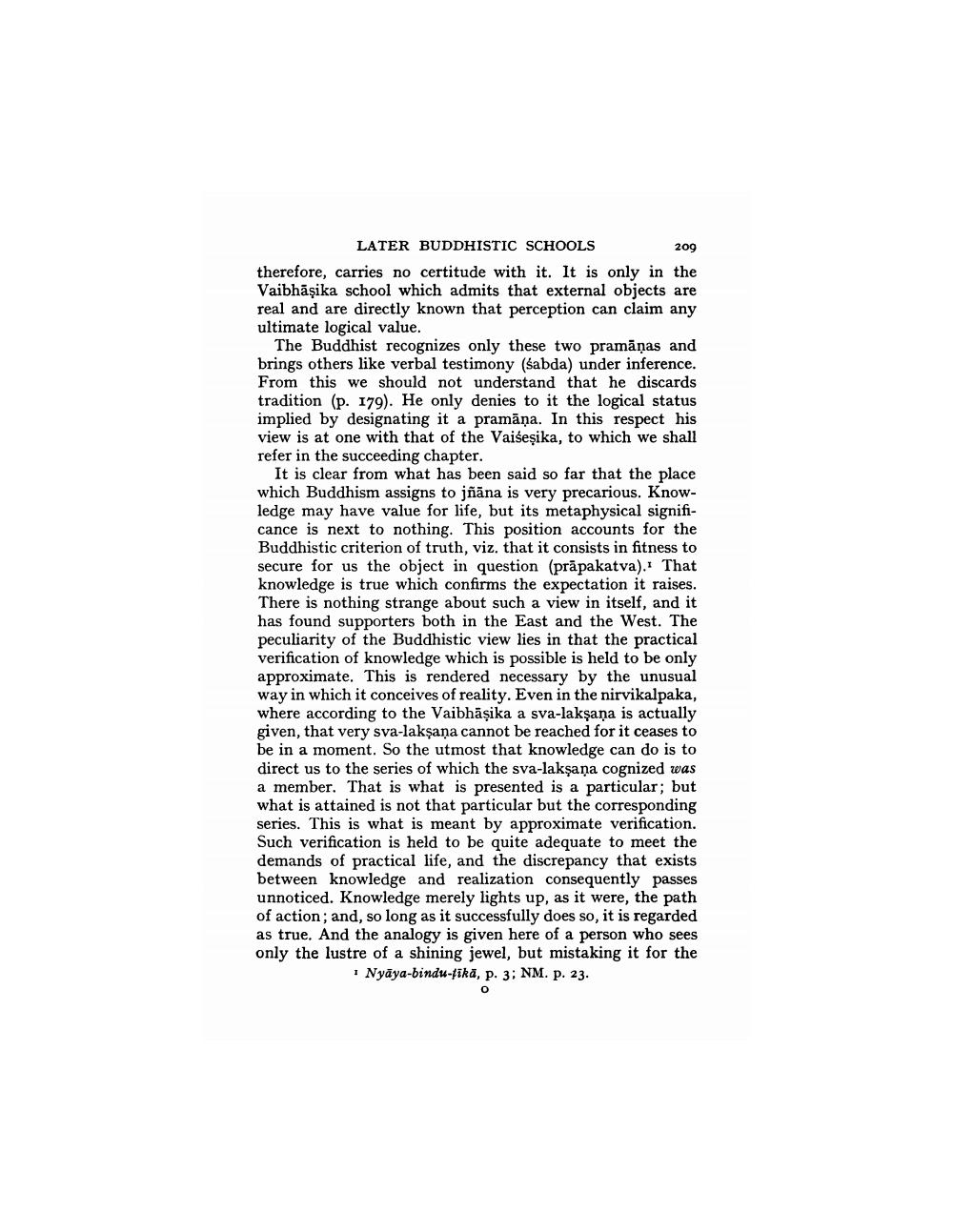________________
LATER BUDDHISTIC SCHOOLS
209 therefore, carries no certitude with it. It is only in the Vaibhāşika school which admits that external objects are real and are directly known that perception can claim any ultimate logical value.
The Buddhist recognizes only these two pramāṇas and brings others like verbal testimony (sabda) under inference. From this we should not understand that he discards tradition (p. 179). He only denies to it the logical status implied by designating it a pramāņa. In this respect his view is at one with that of the Vaišeşika, to which we shall refer in the succeeding chapter.
It is clear from what has been said so far that the place which Buddhism assigns to jñāna is very precarious. Knowledge may have value for life, but its metaphysical significance is next to nothing. This position accounts for the Buddhistic criterion of truth, viz. that it consists in fitness to secure for us the object in question (präpakatva). That knowledge is true which confirms the expectation it raises. There is nothing strange about such a view in itself, and it has found supporters both in the East and the West. The peculiarity of the Buddhistic view lies in that the practical verification of knowledge which is possible is held to be only approximate. This is rendered necessary by the unusual way in which it conceives of reality. Even in the nirvikalpaka, where according to the Vaibhāşika a sva-lakşaņa is actually given, that very sva-lakşaņa cannot be reached for it ceases to be in a moment. So the utmost that knowledge can do is to direct us to the series of which the sva-laksana cognized was a member. That is what is presented is a particular; but what is attained is not that particular but the corresponding series. This is what is meant by approximate verification. Such verification is held to be quite adequate to meet the demands of practical life, and the discrepancy that exists between knowledge and realization consequently passes unnoticed. Knowledge merely lights up, as it were, the path of action, and, so long as it successfully does so, it is regarded as true. And the analogy is given here of a person who sees only the lustre of a shining jewel, but mistaking it for the
· Nyāya-bindu-likā, p. 3; NM. P. 23.




